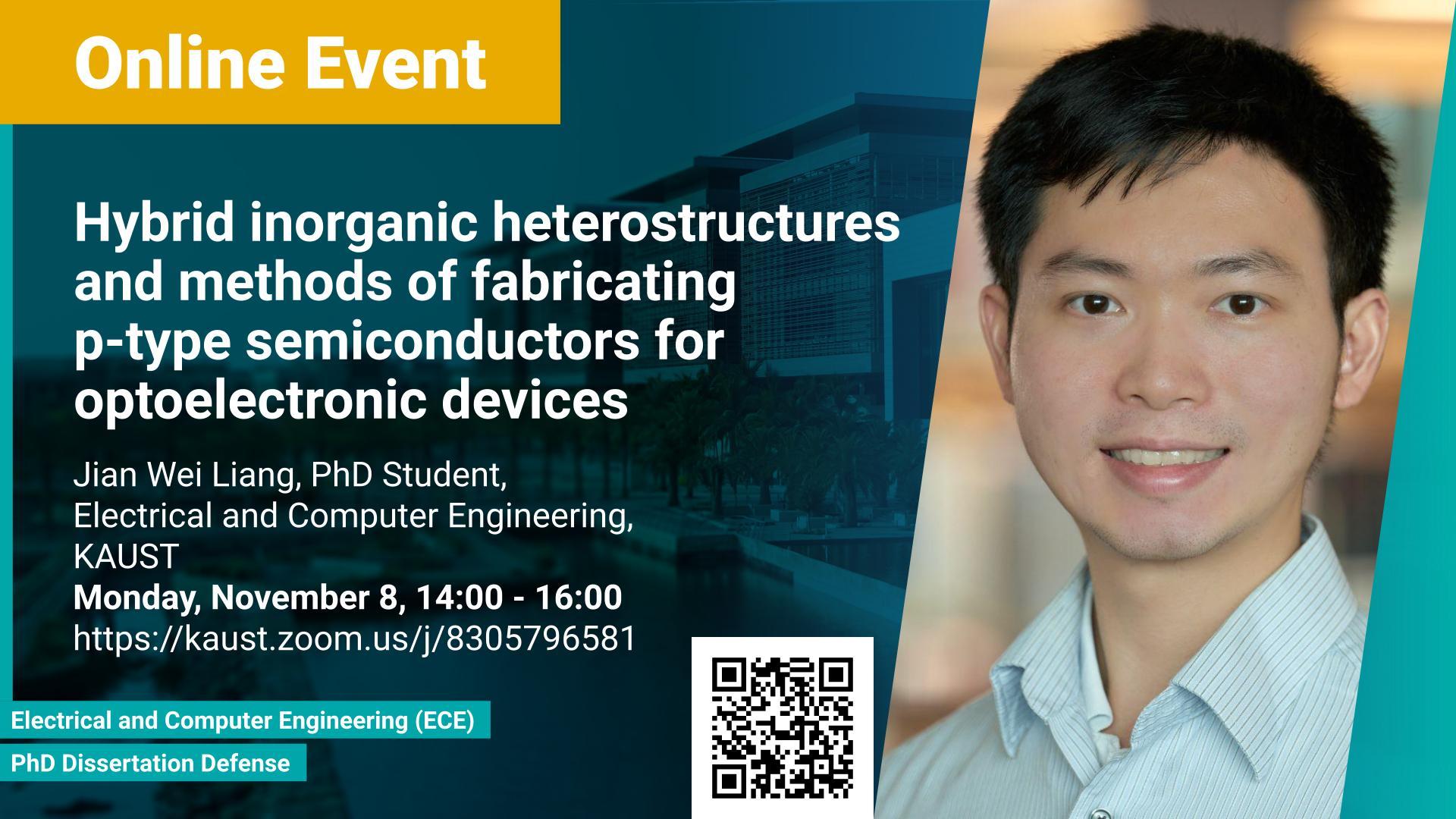Abstract
Semiconductor devices based on wide-bandgap materials exhibit a higher breakdown voltage, temperature tolerance, and device stability, and lower energy loss than devices based on low-bandgap materials. Several limitations challenge the use of III-nitrides and transition metal oxides as wide-bandgap materials. This thesis proposes novel methods to surmount these issues.
For III-nitride wide-bandgap materials, the lack of efficient p-type wide bandgap semiconductors limits the full potential of group-III nitride-based optoelectronic devices. Conventional wide bandgap p-type materials consisting of magnesium-doped gallium nitride (GaN:Mg) and magnesium-doped aluminum gallium nitride (AlGaN:Mg) typically exhibit low hole carrier concentrations of <$10^{18} cm^{-3}$. The hole carrier concentration will be even lower if the bandgap is tuned beyond the energy bandgap of GaN of 3.4 eV by incorporating aluminum nitride. Hence, I used different wide-bandgap inorganic p-type materials as a promising solution, e.g., copper thiocyanate (CuSCN). CuSCN has multiple attractive properties that hold potential for applications in III-nitride materials. For example, its energy band gap is up to 3.9 e.V and its electron effective mass is higher than its hole effective mass. These two key features make CuSCN a potential wide bandgap p-type material for III-nitride systems. By exposing CuSCN to chlorine, Cl$_2$-infused CuSCN thin film achieves a hole concentration up to $10^{18} cm^{-3}$ and maintains its visible-light-blind optical properties. Based on these desirable features, p-CuSCN/n-GaN heterojunction ultraviolet photodetectors, as well as the p-CuSCN and n-GaN interface, were fabricated to investigate the potential applications of p-CuSCN in III-nitride devices. The p-CuSCN/n-GaN exhibited a responsivity, external quantum efficiency, and turn-on voltage of 1.35 A/W, $5.14×10^2$ % at 330 nm, and 2.3 V, respectively. Moreover, p-CuSCN also benefits the corresponding organic solar cells; p-CuSCN-based organic solar cells perform better in power conversion efficiency and stability tests under various conditions than intrinsic CuSCN-based organic solar cells. This work on p-CuSCN not only paves the way for new III-nitride semiconductor devices, but may also potentially enable the development of organic devices with better performance and longer lifetime.
To explore the potential of transition metal oxides in UV photodetectors, NiO was selected to proceed with device fabrication because of its wider energy bandgap and lower hole effective mass than other transition metal oxides. Since single crystal quality is required to maintain its visible-light-blind optical property, brand-new templates were invented to grow single-crystal NiO thin films, TiN/MgO, and TiN/Si. Use of TiN thin film between NiO and the substrates provides a good back-side metal contact for NiO-based semiconductor devices. Several tools were employed to ascertain the single-crystal quality of as-grown NiO thin films on TiN/MgO and TiN/Si. I demonstrate NiO/TiN/MgO and NiO/TiN/Si bilayer structures may pave the way towards better NiO-based ultraviolet optoelectronic devices.
Brief Biography
Jian-Wei Liang is a Ph.D. Student in Electrical and Computer Engineering at Photonics Laboratory, King Abdullah University of Science and Technology (KAUST). Before joining KAUST, he obtained his B.Sc. and M.Sc. in Chemistry at National Cheng Kung University in Taiwan.
His current research interests concentrate on epitaxial growth of wide-bandgap materials (e.g. III-nitrides and transition metal oxides) using MBE, PLD, PECVD, or ALD and the development of the corresponding optoelectronics devices. Moreover, his research interests are also extended to solution-processed wide-bandgap materials, organic-inorganic hybrid structures, and their applications in organic optoelectronics devices.
He is currently a student member of SPIE and OSA.
